This article is part of HuffPost’s Project Zero campaign, a yearlong series on neglected tropical diseases and efforts to fight them.
UTUT FOREST, Kenya ― “This forest is full of leopards” is not what you want to hear when you’re trekking through the equatorial bush and armed only with two cheap umbrellas.
Especially when leopards are hardly the only threat.
Our party ― two journalists, two health workers and a handful of local guides ― is on an expedition into this forest in Kenya’s Rift Valley to meet people plagued by bloodsucking sandflies that transmit a flesh-eating disease called cutaneous leishmaniasis.
This wilderness is largely uninhabited, but some 300 people live in caves here, and survive by selling charcoal. It’s over an hour on foot to the nearest village, and the few roads or footpaths are impassable even by motorbike.
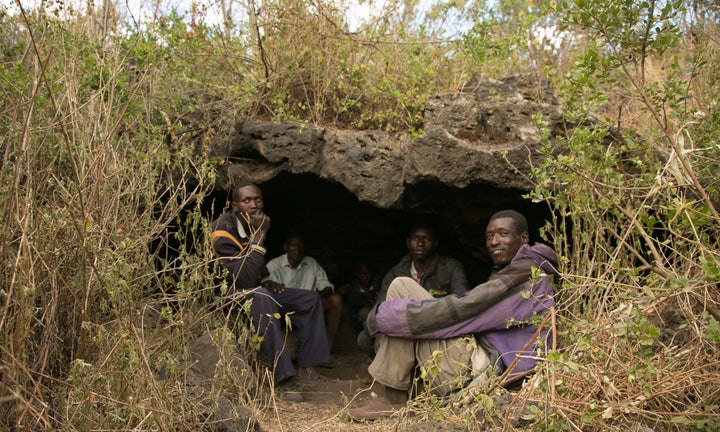
We can’t see any leopards prowling around us in the pristine wilderness, which people usually only visit for safaris, but we know they’re near. Our guides, who live in the forest, shout sporadically to alert us to the big cats.
“Hey, hey, hey!” cries James Biharai, one of our guides, presumably keeping the leopards at bay.
“The leopards eat fully grown adults ― one ate a man last week,” he adds.
We’re suddenly pleased about our decision to leave behind the donkeys we’d booked to carry our camera gear through the dense, sweltering forest. However exhausting it is to lug equipment on our backs, it’s better than being led by slow-moving, four-legged leopard bait.
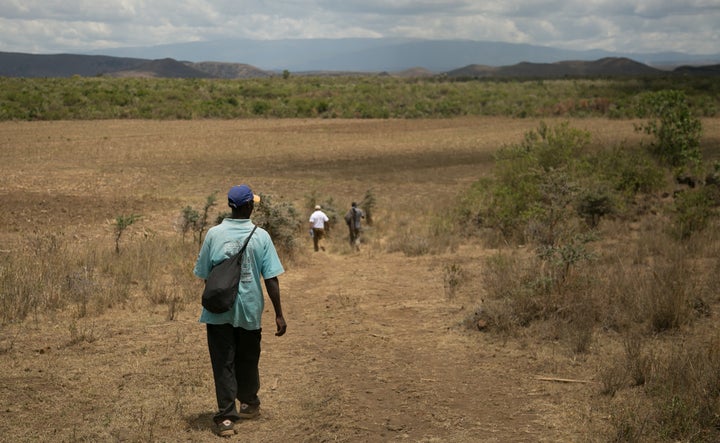
We’re so scared of being eaten that we shelve our previous fears of getting infected with the flesh-eating disease we’re here to investigate.
Our mishmash hiking group is heading to an area where the local people infected with cutaneous leishmaniasis have little hope of receiving treatment. At least 400 people around this area have been affected by the disease in recent years, and reaching them involves covering the Utut Forest to convince them to get proper medical care. Only the odd team of mobile health workers from the government or nongovernmental organizations ever venture out here.
Biharai launches into an elaborate story about how he once survived a leopard attack by holding the animal’s front legs all night so it couldn’t move.
“When it went right, I went right. When it went left, I went left, and so on all night,” he says. The strange dance apparently ended at daybreak with both man and beast so exhausted that they went lumbering off their separate ways.
We are still reeling from this tale when another guide mentions that we should probably be more worried about the lions. Then a third guide chimes in with even more terrifying news: “There are also many, many snakes,” he says, adding that there are also plenty of buffalo in the area.
“In the evening they come to the caves,” he says, stopping to show his scarred back, which he says is the result of a buffalo mauling. “Recently a man was attacked by a buffalo that destroyed his private parts ― took them away completely.”
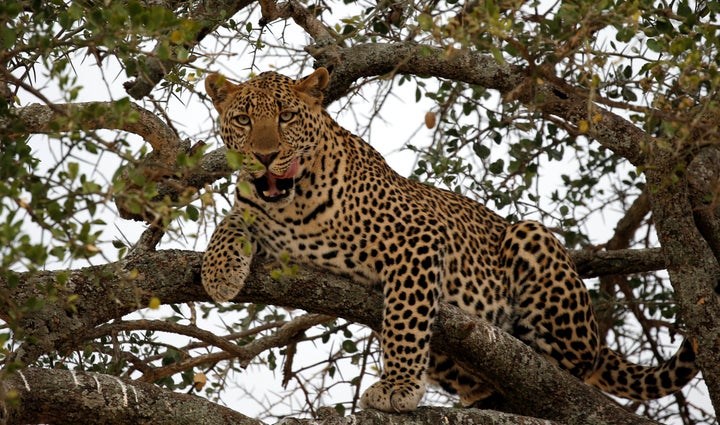
But these grisly stories say nothing of the sandflies, which can inject parasites that slowly eat away at the skin, causing deep, horribly itchy sores. Before the trek out to these bugs’ heartland, we had been made to believe that they bit only at dawn and dusk. But, during the drive to the starting point of our hike, we were informed that the sandflies actually feast on human blood all day.
So we douse ourselves in repellant chemicals and put on an extra layer of clothes, even as we trek 9 miles under the blazing sun.

With so many dangers present, it’s not surprising that health workers have barely dared to tread here.
Joseph Kariuki is an exception.
Kariuki, 50, has covered thousands of miles over the last eight years. He has talked about health care with people in need ― even though he has his own farm and family to look after and, he claims, even though the Kenyan government has never paid him a salary.
He regularly trudges out to the caves of the Utut Forest to tell people that the lesions spreading across their faces are not due to what they call “shetani” ― meaning the devil, or a curse ― and are, in fact, related to a treatable tropical disease.
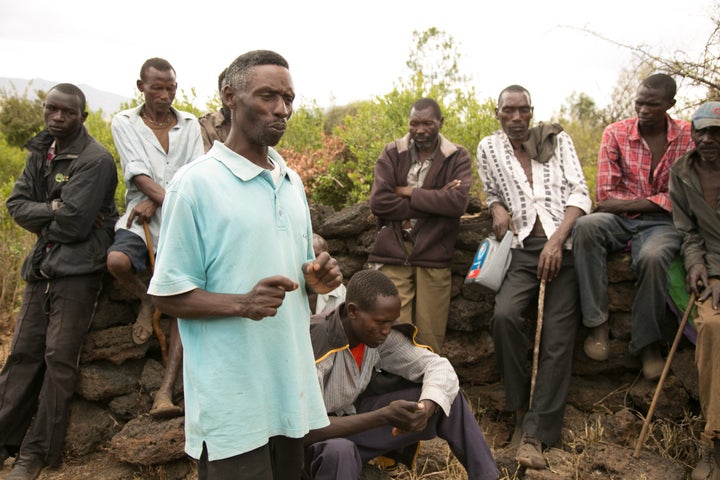
Kariuki also says he teaches people about “the dangers of the caves” and encourages them to move above ground. These caves were used decades ago to protect rebels fighting the British colonial government, he says.
Hellen Tarko, 58, recently moved from a cave to an above-ground home made of grass. After 16 years of cave living and 10 years of suffering from cutaneous leishmaniasis, she saw the light and got treatment.
“The wounds got bigger as time went by. But now I am almost healed,” she says, showing the deep pockmarks now dotting her cheeks.
It is extremely difficult to identify small-scale outbreaks, such as the one health workers and staff from the medical charity Drugs for Neglected Disease Initiative (DNDi) recognized in and around the Utut Forest.
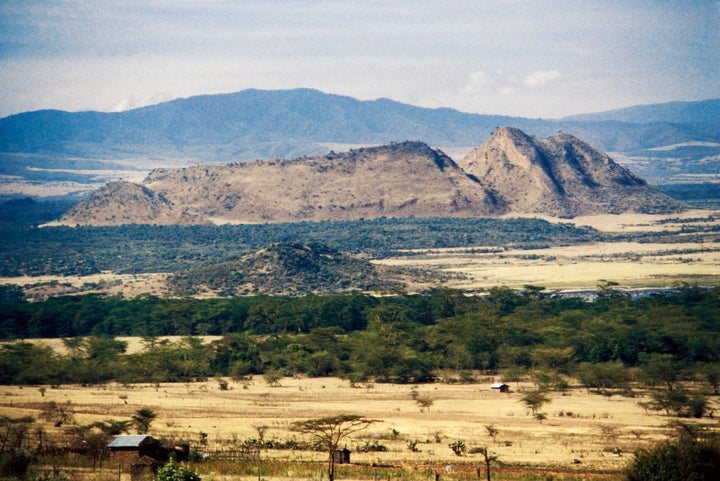
Kariuki also tries to tell the local community to stop using ineffective traditional treatments ― which involve scraping off layers of diseased skin and filling wounds with bitter leaves ― and to instead follow a weeks-long course of injections to the affected area.
But the injections are known to be excruciating. Many people, including 27-year-old Amos Kiptui, only followed Kariuki’s advice once.
“I literally ran away from the treatment,” Kiptui says. “I decided to use these traditional leaves as medicine. But still I haven’t succeeded to heal the wound. If I get another option to treat the wound I would be happy.”
DNDi and partners are researching new oral and topical drugs, which would be easier and less painful for cutaneous leishmaniasis patients to endure.
Until then, disease warriors like Kariuki will keep braving a forest full of leopards, lions, buffalo and snakes to stop people being slowly eaten alive.

DNDi is a recipient of grants from the Bill & Melinda Gates Foundation, which also supports this series. All content is editorially independent, with no influence or input from the foundation.
If you’d like to contribute a post to the series, send an email to ProjectZero@huffingtonpost.com. And follow the conversation on social media by using the hashtag #ProjectZero.

